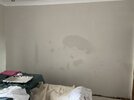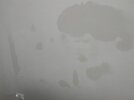- Joined
- 30 Sep 2023
- Messages
- 5
- Reaction score
- 0
- Country

Hi,
I live in a mid terraced house. I have had this wall skimmed and painted recently. These damp patches are showing up in the middle of the walls. Does anybody have a clue what they might be. This wall is the living room wall (ground floor) adjoining to the next house. Thanks
I live in a mid terraced house. I have had this wall skimmed and painted recently. These damp patches are showing up in the middle of the walls. Does anybody have a clue what they might be. This wall is the living room wall (ground floor) adjoining to the next house. Thanks


